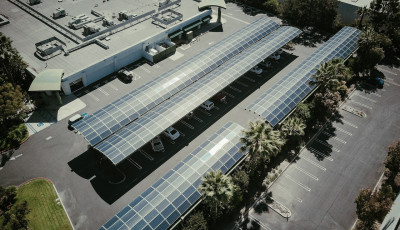Sustainable software engineering is better for the environment and can help a business’s bottom line. Here is why Helmes developers are embracing it.
Those working in software development should think more about the carbon footprint of the lines of code they write. Outside of specific niches, like blockchain applications, software’s energy consumption tends to receive little attention.
Nevertheless, the fact is that software significantly impacts energy consumption — and, by extension, environmental sustainability. Realising this is why Helmes has become an advocate of sustainable software development.
What is sustainable software engineering?
Sustainable software engineering (also known as sustainable software development) is a software design, implementation, and deployment approach that emphasises energy efficiency and environmental sustainability.
The goal of sustainable software is to minimise the impact that applications, software architecture and the infrastructure that hosts them, have on the planet.
Why should we use sustainable software development?
A sustainable approach to our lifestyles and business and life has grown in popularity in the last decade. Whatever we do in our daily lives, we are now striving more than ever to reduce our impact on the planet.
This sustainable approach is being adopted in all industry sectors, and the software development industry is no different. However, it should be noted that professional software development should be sustainable anyway – experienced developers will not bloat software applications; thus, they are streamlined regardless.
Still, with growing digitalisation and the shift to cloud computing, it has become evident that software applications are not lean concerning data storage or software architecture.
For example, cloud computing, the Internet of Things (IoT) and other digital services have considerably increased the amount of internet traffic. However, internet traffic itself only consumes a little energy. Data processing consumes power and requires physical servers that are located globally.
The carbon footprint that digital technology creates might seem surprising, as it exists in a non-physical world. However, data processing involves a high degree of CO2 use, which continues to grow with digital data consumption, as more energy is required to service our online data.
According to research from the Shift Project Report, global digital energy consumption has increased by about 9% per year.
Reducing our environmental footprint with sustainable software
There are different ways to reduce our environmental footprint.
Many companies have included a sustainability plan in their corporate missions, calling for energy and cost-efficient products and services.
Businesses are lessening the negative impact by:
- Reallocating energy sources to more renewable energy sources.
- Using software that causes less environmental impact.
- Developing green software with lower ecological impact by ensuring code is streamlined and software architecture is not over-engineered.
- Investing in and donating part of company revenue to organisations and projects working to help the environment.
- Producing new software standards that prolong devices’ lifecycles, reducing the amount of total e-waste.
- Recycling hardware devices into the circular economy.
Sustainable software would minimise the long-term impact of the IT infrastructure on the world. Thus, this is not only better for the environment, but it also helps businesses build efficient products.
How does sustainable software development work?
Sustainable software development is tailored to each application and use case; because there is no one-size-fits-all formula that acts as a blueprint for building sustainable software.
Typically, our team focuses on the following points in ensuring sustainable software engineering:
1. Software optimisation
The more efficient the software code, the less energy software applications require. One reason (user experience and application performance are the others) why our developers optimise functions and avoid extraneous features is not to bloat the software.
Whilst the energy consumed by each application instance may be minimal, it adds more inefficiency and consumption. Besides, writing overengineering code is not ideal for application performance anyway.
2. Deployment
The idea behind software deployment is to avoid ‘idling’ and only using applications only as needed with optimal resources (for instance, private servers constantly running vs cloud-native applications deployed to the cloud that only use minimal energy).
Moreover, what is done and where (for example, avoiding transferring vast amounts of data and doing the initial processing where the data is created (taking advantage of edge computing where computation and data storage are closer to the data sources).
3. Integrations
Sustainable software will reduce the amount of data processed between system components and third-party systems. For example, e-shops send out PDF files to customers, and yet how many of these receipts are needed? Emails consume a considerable amount of data that is only sometimes used.
Is sending these emails and the amount of data necessary to process them really sustainable? No, this is purely ‘waste data.’
4. Stored data
Sustainable software is about how much data is stored in the system and for how long. For instance, is there a need to keep data logs in a database? Or can it be removed or not stored in the first place?
5. Size of the data stored
The size of the media we use can impact the need for data storage and processing – for instance, where lower-quality images will do, then no need to use higher-quality ones that consume a lot of computational processing.
6. Refactoring
All sustainable software solutions should be well-maintained and refactored. Refactoring allows for redesigning a system and removing functionalities that are no longer used or necessary. For example, removing a constantly running service that is no longer needed if the exact business requirement needs can be served another way.
7. Avoiding third-party components
Sustainable software developers avoid using huge third-party components (dependencies) from which end-users use only a tiny part, as running the whole process can be very resource-consuming. It’s ‘cool’ to build more components within the software but is it needed?
8. Software architecture
Sustainable developers take advantage of software architectures that improve overall efficiency and reduce energy consumption. For instance, they deploy some parts of their application as serverless functions instead of running them continuously. By doing this, they achieve lower overall energy consumption rates.
9. Data centre choices
The data centres chosen to host applications bear implications for how ‘green’ our software applications will be. Cloud providers have varying levels of commitment to carbon neutrality and sourcing from green energy.
Simple systems run faster and are more efficient; one should avoid overdesigning the software for the sake of having bells and whistles that no one needs or uses, as these bells and whistles are usually the most resource-hungry features, Our sustainable software developers consider the above when devising our overall software development strategy for clients.
How much does sustainable software engineering cost?
One advantage of building sustainable software is that it does not usually cost any more than software development processes that do not prioritise sustainability. As discussed above, professional software developers should write leaner, more sustainable code.
Some upfront costs may be associated with sustainable software engineering practices, for example, investing in development resources to refactor applications to run inside containers or inefficient rearchitecting applications. However, these efforts will likely pay for themselves, leading to lower overall hosting bills once the applications are live.
Without a doubt, software is the backbone of virtually all innovative solutions designed to support the environment. For example, it is critical to tackle deforestation and reduce emissions.
However, companies can make greener software a core part of their sustainability approach by ensuring its carbon footprint is lessened when they design, develop and deploy and by rethinking some aspects of how the data centres that provide cloud-based services operate.
On its own, the software does not consume energy or emit any harmful discharge. The problem lies in how software is developed for use — and then in how it is used. For instance, the software runs on hardware, and if the software continues to grow, so does our reliance on hardware.
Furthermore, the increasing scrutiny of companies and their Environmental, Social, and Governance (ESG) goals means that software companies must take producing green software more seriously. The result has been higher-quality software and products: leaner, cleaner, and more fit for their purpose.
Green software will help enterprise companies meet their ESG targets, an increasingly important performance measure for investors and stakeholders.
Finally, newer software engineers are increasingly weighing a company’s focus on sustainability when choosing an employer; a commitment to green software can be persuasive in attracting top talent.
Who should use sustainable software?
In that sense, every business that builds or uses software can benefit from sustainable software engineering.
Businesses and large enterprises looking for easy-to-deploy software that consumes less energy occupies less space on the cloud, and works better should seek sustainable software solutions, particularly if they wish to transition towards a greener digital world.
Sustainable development engineering is one way for companies to become more ecologically and socially responsible. Customers and employees are likely to appreciate those brands that do – 77% of consumers want sustainable brands.
As noted above, sustainable software engineering tends to reduce overall IT hosting costs in most cases. Businesses will likely spend less on servers or cloud services when their applications run efficiently.
Getting started with sustainable software development
A sustainable software development partner is an out-of-house third party with a team of developers that can aid other companies in delivering a sustainable development project.
Sustainable Software development partners are typically outsourcing companies utilised by organisations to reduce the costs and bureaucracy associated with hiring more in-house developers.
More likely than not, they will have an expanded team of developers who embrace a sustainable mindset and contain the skill sets that are usually not in-house but required for a project a business is attempting to develop.
Ensuring a software development partner comprehends a green software project is critical to a successful software product.
If your company plans to collaborate with a sustainable software development company, here are a few pointers you need to keep in mind when cooperating with an external partner.
- Share precise business needs. If you go ahead with sustainable developers, thoroughly analyse your product and understand the green software programming languages and frameworks needed to develop it. If you require highly-experienced and qualified sustainable software engineers, create a list of demands and details to share with the development partner.
- Provide the external partner with details of your sustainable needs. In most cases, you receive complete control over processes—from pre-screening potential candidates to hiring. Find a partner that ensures transparent processes and lets you monitor hiring mechanisms.
Doing this will get you and the partner to engage and discuss the software’s environmental impact. There are always trade-offs between environmental and business goals, and sustainable software engineers will be able to gauge where the go/no-go line is.
However, valuable measures would be more challenging to define for new software. From our experience, this has included actions like memory-use efficiencies, the amount of data used, and floating-point operations per second.
Finally, consider how modern applications are almost always deployed over the cloud. Nevertheless, the exponential growth in cloud-based services has resulted in the rapid expansion of power-intensive data centres. Data centres consume about 2% of global electricity today; by 2030, they could consume as much as 8%.
To date, most efforts to make data centres green have focused on optimising hardware (by reducing incidents of overheated servers) and reducing carbon emissions.
However, at Helmes, we also focus on green software that eliminates duplicate copies or compresses data into smaller parts, would reduce energy as would deploying graphics-processing units to manage workloads at the edge (near the device or the end-user), creating efficiencies by breaking up large tasks into smaller ones and divvying them among many processors.
Sustainable software is green software
How green software is designed, developed, and deployed can significantly impact energy consumption.
All businesses and organisations should include green software in their sustainability efforts. They should devise a strategy that guides trade-offs, allows for flexibility, reviews and refines the green software development life cycle, and uses sustainable software to make cloud-based data centres more environmentally friendly.
By including software in your sustainability efforts, your company will have a head start in this critical area.
Include software in your sustainability efforts






Get in touch




